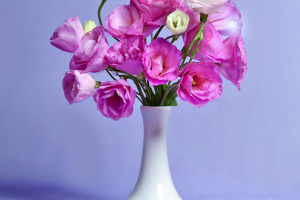In the realm of floral design, bouquet matching is an essential technique that can transform a simple arrangement into a stunning masterpiece.
The art of pairing different flowers, colors, and textures requires an eye for aesthetics and a deep understanding of the unique characteristics of each bloom.
By harnessing the power of bouquet matching, florists and enthusiasts can create harmonious and captivating displays that evoke a range of emotions. In this article, we delve into the world of bouquet matching, exploring its principles and offering guidance on how to create unforgettable floral compositions.
Bouquet matching begins with a thoughtful selection of flowers. Each flower has its personality and can convey a specific message or evoke a particular sentiment.
Roses, for instance, are synonymous with love and romance, while lilies symbolize purity and beauty. By combining flowers with complementary meanings, one can create bouquets that convey a nuanced and powerful message.
Color plays a crucial role in bouquet matching. It sets the tone, evokes emotions, and creates visual impact. Harmonious color combinations, such as monochromatic arrangements or analogous hues, create a sense of unity and tranquility.
On the other hand, contrasting colors, like vibrant reds against cool blues, can make a bold statement. Understanding color theory and experimenting with different palettes can help achieve the desired effect and evoke specific moods through bouquet matching.
The texture is another vital element in bouquet matching. Flowers possess a variety of textures, from soft and delicate petals to rough and spiky surfaces. Combining different textures adds depth and visual interest to a bouquet.
Smooth and velvety roses paired with fluffy hydrangeas create a luxurious and romantic composition while incorporating wildflowers with rugged foliage can lend a rustic charm to an arrangement. Balancing textures allows for the creation of captivating contrasts and enhances the overall aesthetic appeal.
Proportions and balance are fundamental aspects of bouquet matching. Each flower's size and shape must be considered to achieve a visually pleasing arrangement.
Large blooms, such as sunflowers or peonies, can serve as focal points, while smaller flowers and foliage provide supporting elements. Striking the right balance between the various components ensures that no single element overwhelms the others, resulting in a cohesive and harmonious bouquet.
To enhance the overall impact of a bouquet, consider incorporating additional elements. Fragrant herbs, such as lavender or mint, can add a delightful scent to the arrangement.
Branches, twigs, or berries can bring a touch of nature and whimsy. Ribbons, lace, or decorative wraps can add a touch of elegance and personalize the bouquet further.
Bouquet matching is a skill that can be honed over time. Experimentation and practice are key to developing a unique style and achieving mastery of this art form.
Studying the work of renowned floral designers, attending workshops, and staying abreast of current trends can provide inspiration and insights to push creative boundaries.
Bouquet matching is an intricate art that combines the language of flowers, color theory, texture, and balance.
By understanding these principles and unleashing creativity, one can create breathtaking floral arrangements that captivate the senses and leave a lasting impression.
So, let your imagination bloom and embark on a journey to create your bouquet bliss.


